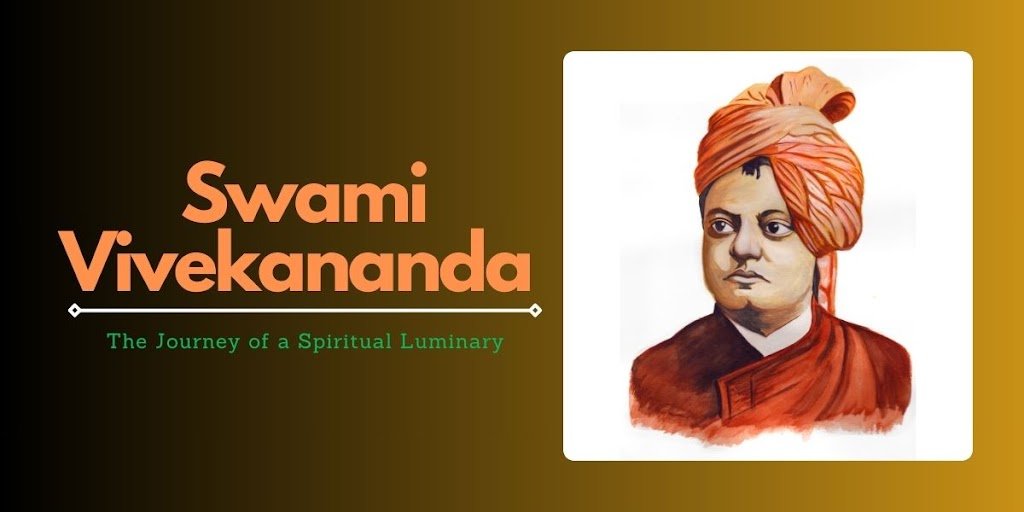Swami Vivekananda, the name itself evokes reverence, admiration, and a sense of profound wisdom. His life, though tragically cut short, left an indelible mark on the world, re-energizing Hinduism and introducing the West to the profound depths of Indian philosophy. To truly comprehend the impact of this spiritual giant, we must delve into the annals of Swami Vivekananda’s history, tracing his journey from a curious young man to a globally revered spiritual leader.
The Early Years – Nurturing the Seed of Wisdom in Swami Vivekananda History
Born Narendranath Datta on 12th January 1863, in Calcutta (now Kolkata), Swami Vivekananda’s history began amidst the intellectual and cultural ferment of 19th-century Bengal. His father, Vishwanath Datta, was an attorney known for his progressive outlook, while his mother, Bhuvaneshwari Devi, was a woman of deep piety and strong character. This blend of rationality and spirituality in his upbringing played a crucial role in shaping the future of Swami Vivekananda’s history.
As he was fondly called, Young Naren displayed a precocious intellect, a thirst for knowledge, and an innate inclination towards spirituality. The seeds of his intellectual curiosity were sown at the Metropolitan Institution, founded by Ishwar Chandra Vidyasagar, where he received a well-rounded education. This emphasis on rational inquiry and exposure to Western philosophy and science form a significant chapter in Swami Vivekananda’s history.
The Quest for Truth – A Defining Chapter in Swami Vivekananda History
Narendranath’s quest for truth led him to explore various religious and philosophical schools of thought. From the Brahmo Samaj, which sought to reform Hinduism, to Western philosophy, he immersed himself in understanding the nature of reality and the divine. However, a burning question lingered in his heart – “Have you seen God?” This relentless pursuit of truth forms the crux of Swami Vivekananda’s history.
Meeting the Master – A Turning Point in Swami Vivekananda History
The year 1881 marked a watershed moment in Swami Vivekananda’s history – his encounter with Sri Ramakrishna Paramhansa. Drawn to Dakshineshwar Kali Temple, where Ramakrishna was the priest, Narendranath initially approached him with skepticism, questioning the existence of God. Ramakrishna, with his characteristic simplicity and profound wisdom, recognized the young man’s spiritual potential.
Their relationship, though initially that of a skeptical student and a patient master, blossomed into a deep bond of love and respect. Ramakrishna’s teachings, rooted in the experience of the Divine and the unity of all religions, resonated deeply with Narendranath. It was under his guidance that he underwent a profound spiritual transformation, ultimately accepting Ramakrishna as his Guru, a pivotal turning point in Swami Vivekananda’s history.
The Passing of the Master and the Birth of a Legacy in Swami Vivekananda History
The year 1886 brought with it immense sorrow – the passing of Sri Ramakrishna. Following their Guru’s demise, Narendranath and his brother’s disciples took formal vows of Sannyas (renunciation) at Baranagar Math, assuming new identities as monks. This marked the formal beginning of Swami Vivekananda’s history, taking on the mantle of spiritual leadership and continuing his Guru’s mission.
A Solitary Journey – Shaping the Vision in Swami Vivekananda’s History
Driven by an inner calling to understand his motherland and his purpose, Swami Vivekananda embarked on a solitary journey across India. Traveling on foot, often relying on the kindness of strangers, he traversed the length and breadth of the subcontinent. He witnessed firsthand the plight of his countrymen, their poverty, and their struggles, a poignant chapter in Swami Vivekananda’s history.
This journey, however, was not merely geographical; it was a profound inner pilgrimage. He meditated in the Himalayas, seeking answers to the challenges facing his nation and his role in alleviating their suffering. These years of intense introspection and self-discovery further shaped the vision and mission that would come to define Swami Vivekananda’s history.
The World Stage Beckons – Swami Vivekananda History at the Parliament of Religions
Destiny, it seemed, had other plans for the young monk. In 1893, Swami Vivekananda, representing Hinduism at the World Parliament of Religions in Chicago, became an overnight sensation. His now-iconic opening address, “Sisters and Brothers of America,” delivered with eloquence and conviction, captivated the audience and forever etched Swami Vivekananda’s history in the annals of interfaith dialogue.
His message was simple yet profound – tolerance, respect for all religions, and the universality of the spiritual quest. He challenged the prevailing notions of religious superiority, advocating for the common thread of spirituality that united humanity. This bold and eloquent articulation of Vedanta philosophy captivated the West, making Swami Vivekananda a global ambassador of Hinduism and an influential figure in Swami Vivekananda’s history.
Spreading the Message – Swami Vivekananda’s History as a Global Teacher
The following years saw Swami Vivekananda tirelessly lecturing across the United States and England, establishing Vedanta societies and spreading the message of his Guru. He dispelled misconceptions about Hinduism, presented its philosophical depth, and emphasized the importance of self-realization. His teachings, infused with practicality and relevance to contemporary issues, resonated with Western audiences, making him one of the earliest figures to introduce Eastern thought to the West, a significant chapter in Swami Vivekananda’s history.
Return to India and the Birth of a Movement in Swami Vivekananda History
Upon his return to India in 1897, Swami Vivekananda was greeted with a hero’s welcome. His message of national regeneration, social reform, and spiritual awakening resonated deeply with a nation struggling under colonial rule. He established the Ramakrishna Mission in 1897, inspired by the ideals of Karma Yoga – selfless service to humanity as a path to spiritual growth.
Through the Ramakrishna Mission and its numerous branches across India, Swami Vivekananda’s history took on a new dimension. He channeled his energy towards social upliftment, advocating for education, healthcare, and the eradication of poverty. His call to action, “Arise, Awake and Stop Not Till the Goal is Reached,” became a rallying cry for national awakening, cementing Swami Vivekananda’s history as a social reformer and nation builder.
The Legacy of a Visionary – The Enduring Impact of Swami Vivekananda History
Swami Vivekananda’s life, though tragically cut short at the age of 39 in 1902, left an indelible mark on India and the world. His teachings on Vedanta philosophy, his emphasis on interfaith harmony, and his call for social justice continue to inspire millions.
Swami Vivekananda’s history is a testament to the power of:
- Fearless conviction: He challenged dogma and orthodoxy, urging people to think critically and experience truth for themselves.
- Universal spirituality: He broke down religious barriers, advocating for the inherent unity of all faiths.
- Service to humanity: He believed in action, in translating spiritual ideals into tangible social change.
- Honoring the Legacy: Keeping Swami Vivekananda History Alive
Today, Swami Vivekananda’s legacy lives on through the countless individuals and institutions inspired by his life and teachings. His birth anniversary, 12th January, is celebrated as National Youth Day in India, a testament to his enduring appeal to the younger generation.
We honor Swami Vivekananda’s history not just by remembering his words but by embodying his ideals. By embracing his message of service, tolerance, and spiritual growth, we keep his legacy alive, ensuring that his vision continues to inspire generations to come. His story is a beacon of hope, reminding us that even in the face of adversity, the human spirit, when guided by wisdom and compassion, has the power to transform the world.




